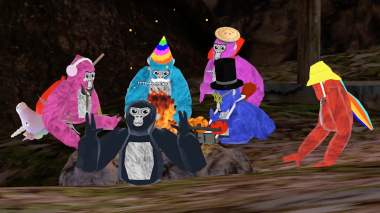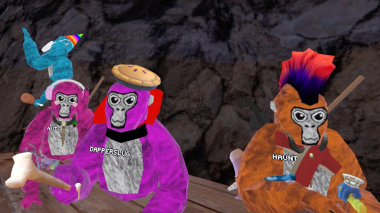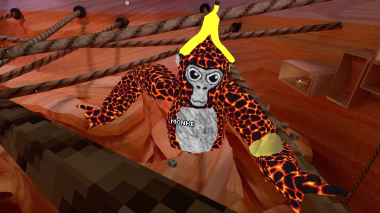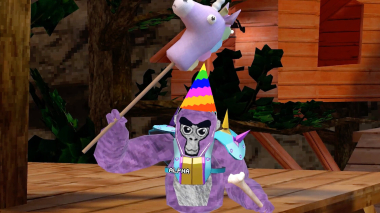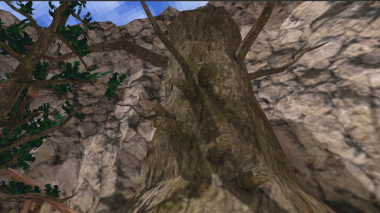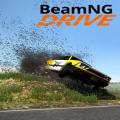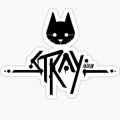I vividly remember the first time I put on my VR headset and entered the world of Gorilla Tag. The sensation was unlike any other game I'd experienced before. I felt an overwhelming mix of excitement and nervous anticipation as I prepared to step into a world where my actions were defined by the simplest of movements. As I entered the game, I was immediately struck by the raw simplicity of the environment and the innovative approach to movement. The game eschews traditional locomotion controls in favor of a unique system that requires me to use my arms to swing, jump, and propel myself like a true simian. This approach felt both challenging and exhilarating, setting the stage for what would become an intense, physical adventure in virtual reality.
An Immersive VR Journey
From the moment I began playing, Gorilla Tag invited me to explore its expansive world with an unprecedented sense of freedom. The game’s design transcends the simple boundaries of a digital playground; it allows me to fully immerse myself in a realm where both physicality and agility are key. I could not help but marvel at how the mechanics elegantly fused natural movement with digital capabilities, making every leap and swing feel organic. The interface is minimalistic, intentionally stripping away the clutter of conventional VR games to focus on the core elements of movement and spatial interaction. Navigating this environment required not only coordination but a deep understanding of my own physicality, turning every session into an opportunity for unexpected discovery.
The Intuitive Movement System
The heart of Gorilla Tag lies in its movement system, which is refreshingly intuitive. In a world where most VR games rely on joystick inputs or button presses for movement, Gorilla Tag challenges traditional paradigms by requiring me to mimic the movements of a gorilla. Every push, every grab, and every swing is powered by my own arms, creating a strong connection between my real-world motions and my virtual avatar’s actions. This unique control scheme compelled me to think differently about motion in VR, prompting a level of physical engagement that I had rarely experienced in gaming. At times, my arms ached from the continuous effort, yet there was an undeniable thrill in the physical exertion and the way each movement directly influenced my trajectory within the game’s environment.
Playing with a Community of Enthusiasts
One of the most striking aspects of Gorilla Tag is the vibrant community that surrounds it. From the first few minutes of play, I encountered fellow gorilla enthusiasts who were just as passionate about the game’s innovative approach to movement. Whether playing casually or competing in spontaneous matches of tag, every interaction contributed to a sense of shared purpose and camaraderie. This community is one of the most welcoming and supportive I have come across in the world of VR gaming. The social aspect of Gorilla Tag goes beyond mere competition; it fosters a collaborative spirit where players exchange tips, celebrate impressive maneuvers, and encourage each other to push the boundaries of physical movement. It is this communal energy that transforms each session into a dynamic exercise in both fitness and friendship.
The Art and Aesthetics of the Jungle
Visually, Gorilla Tag strikes a pleasing balance between simplicity and style. The game’s art direction employs a minimalistic approach that enhances its playful and accessible atmosphere. Although the graphics may not boast hyper-realistic textures or complex models, every element is intentionally designed to support smooth gameplay and fluid motion. The environments, which range from serene, forest-like groves to more abstract landscapes, are rendered in bold, clear geometries that serve both aesthetic and functional purposes. I found that the visual simplicity actually enhances my overall experience, allowing me to focus on the rhythm of my movements and the immediate satisfaction of leaping across platforms. There is a raw, almost childlike quality to the graphics that invites exploration and sparks the imagination with every swing and jump.
Soundscapes that Enhance the Experience
The auditory elements of Gorilla Tag play a surprisingly significant role in immersing me in its world. The game features a dynamic soundscape that adapts as I move through the environment. The rustling of the virtual leaves, the echoes of my movements, and the occasional call of a distant animal all work together to create a soothing yet invigorating atmosphere. While the sound design might be understated at first, I quickly began to appreciate its subtle contributions to the overall experience. The ambient sounds not only enhance the feeling of being in an expansive natural world but also provide crucial audio feedback during moments of intense movement. This feedback has helped me refine my timing and improve my control, making every jump or swing feel more deliberate and precise.
Physicality and the Feeling of Freedom
Gorilla Tag is more than just a game—it is a celebration of physicality in the realm of virtual reality. The unique movement mechanics transform the simple act of swinging your arms into an exercise in mind-body coordination. Every session leaves me feeling both exhilarated and surprisingly exhausted in a way that mirrors a real-world workout. The raw, unfiltered engagement required by the game means that I am not simply a spectator but an active participant in a physical journey. Moving through the digital trees and leaping between platforms creates a powerful sense of freedom that is difficult to replicate in any other VR experience. This freedom is both liberating and challenging, encouraging me to continually adapt my movements and embrace the constant creativity demanded by the game’s design.
Detailed Mechanics and Game Dynamics
Diving deeper into the gameplay mechanics, I was fascinated by the balance between simplicity and complexity that Gorilla Tag offers. The rules of the game are straightforward: navigate the environment by swinging and jumping, avoiding capture, or tagging others in playful bouts of high-energy action. Yet, beneath this simplicity lies a sophisticated interaction of physics and control. There is a gratifying sense of mastery as I learn to control momentum and leverage my virtual body’s inertia, allowing me to perform increasingly daring maneuvers. Every session provides a platform for continuous improvement, where even the slightest adjustment to my grip or swing can have a noticeable impact on how gracefully I traverse the game’s terrain.
Performance and Control Intuitiveness
One of the aspects that truly impressed me about Gorilla Tag was how responsive the controls felt, even though they were based solely on the mechanics of my own arm movements. The game is finely tuned to pick up on subtle shifts in my physical actions, translating them into dynamic in-game movements with minimal lag. This level of precision is critical when I’m engaged in a fast-paced chase or executing a complex series of jumps. The controls are designed in such a way that after only a short period of adjustment, I began to trust my own instincts, relying on bodily memory rather than on virtual prompts. The intuitiveness of these interactions is what allows the game to feel so organic, making every movement a natural extension of my will.
The Endless Opportunities of Exploration
One of the most captivating features of Gorilla Tag is the endless opportunities it provides for exploration and self-improvement. Every session is a new challenge where I can experiment with different techniques to navigate the diverse environments. There is always a new path to discover, a better angle to approach a climb from, or a more efficient swing to perfect. I am constantly discovering hidden routes and inventive ways to traverse the digital realm. This sense of exploratory freedom is a constant motivator and keeps the game feeling fresh even after extended play. The interplay between the beautifully crafted environments and the mechanics of agile movement creates an arena where creativity knows no bounds, and every session feels like an opportunity to push the limits of what I can achieve.
Navigating Challenges in a Dynamic Environment
Challenges in Gorilla Tag are not presented in the conventional form of enemy targets or preset obstacles; rather, they arise from the dynamic interaction between my physical actions and the virtual environment. I have encountered moments where a sudden shift in platform placement or an unexpected change in the path forced me to recalibrate my movements on the fly. These challenges require me to maintain an acute awareness of both my virtual surroundings and my own body. The difficulty curve is beautifully balanced, ensuring that I am continually engaged and presented with fresh scenarios that test my adaptability. Overcoming these challenges is extremely rewarding, as each success is a testament to the synergy between my physical abilities and the game’s physics-based design.
Collaborative Play and Competitive Spirit
Another layer of enjoyment in Gorilla Tag comes from engaging with friends and other players in both cooperative and competitive settings. I have spent countless hours teaming up with other gorilla enthusiasts in playful rounds of tag, where the excitement is palpable, and every match feels like an unpredictable but joyous race against time. Whether working together to outmaneuver a particularly challenging situation or competing in a lighthearted contest of temporary leadership, the multiplayer component adds an invaluable dimension to the game. The collaborative play encourages creativity and drives me to constantly improve my agility and speed. Even in competitive scenarios, there is a strong sense of mutual respect and shared enthusiasm for the physical and mental challenges that the game offers.
Exploring the Limits of Virtual Reality
Gorilla Tag has expanded my understanding of what virtual reality can truly offer. In a medium often criticized for its reliance on conventional controls and static environments, this game provides a strikingly novel paradigm in which the physical body becomes the primary controller. My experience with the game blurred the lines between digital and physical realities, transforming a simple VR session into an immersive opportunity to harness the full potential of intuitive movement. The game invites me to test the limits of my own physical coordination in tandem with the capabilities of VR technology, which results in a uniquely engaging, heartfelt experience. Every session serves as an exploration of both new territories in the virtual landscape and unexplored aspects of my personal agility and coordination.
Continuous Learning and Adaptive Strategies
As I delved deeper into the game, I found that every play session was a rewarding lesson in adapting to new challenges. The absence of rigid game structures and the emphasis on physicality means that each match taught me something new about balance, timing, and spatial awareness. I discovered that through repeated attempts and constant experimentation, my movements became more precise and intentional. I began to understand the subtle nuances of how gravity, momentum, and new angles come together in real-time. This continuous learning process is one of the aspects I appreciate most about Gorilla Tag; it is not only a game but also an exercise in physical intuition and mental agility. Each new challenge presented an opportunity to refine my techniques and discover innovative ways to navigate through the ever-changing landscape.








